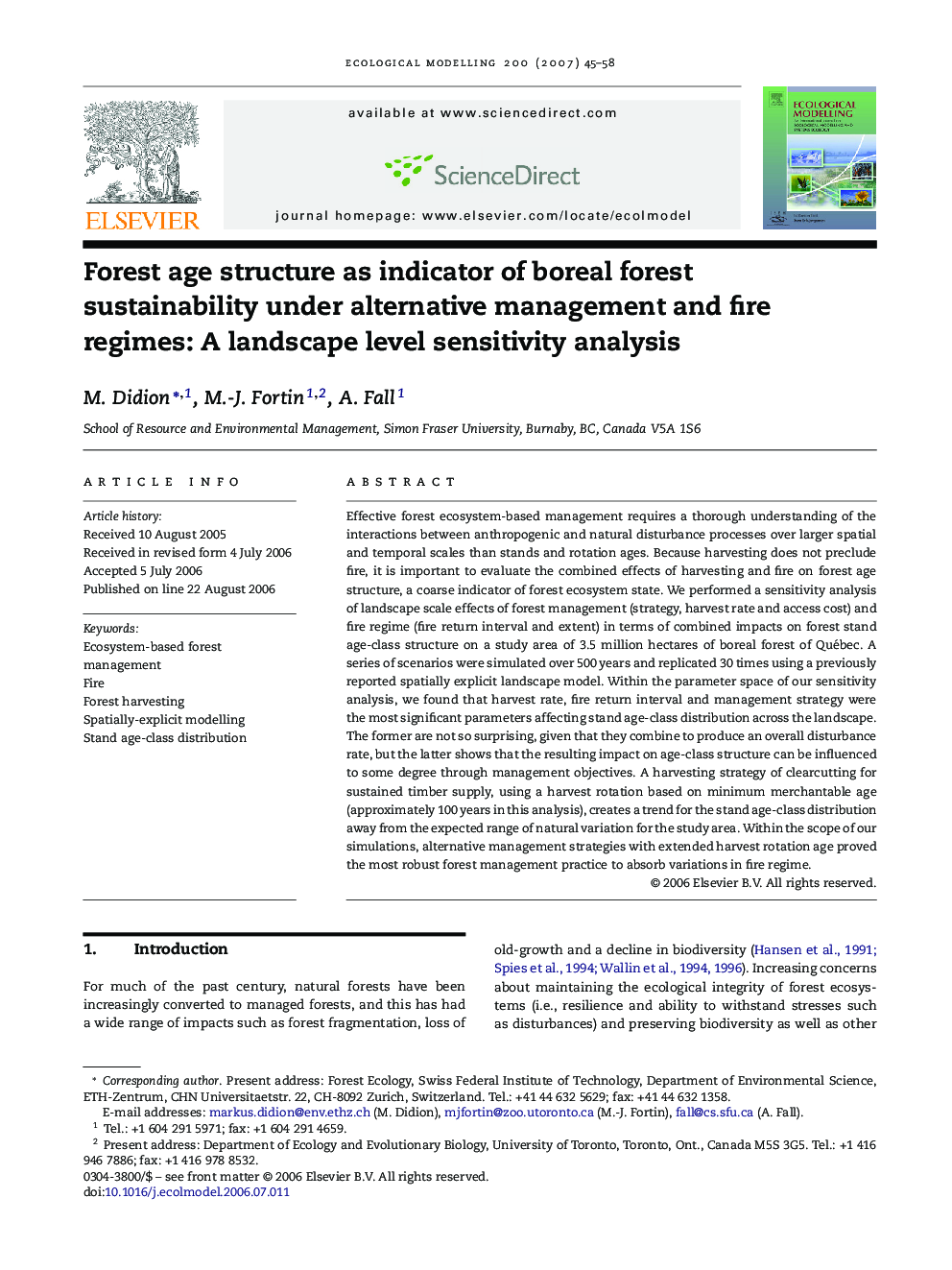| Article ID | Journal | Published Year | Pages | File Type |
|---|---|---|---|---|
| 4378863 | Ecological Modelling | 2007 | 14 Pages |
Abstract
Effective forest ecosystem-based management requires a thorough understanding of the interactions between anthropogenic and natural disturbance processes over larger spatial and temporal scales than stands and rotation ages. Because harvesting does not preclude fire, it is important to evaluate the combined effects of harvesting and fire on forest age structure, a coarse indicator of forest ecosystem state. We performed a sensitivity analysis of landscape scale effects of forest management (strategy, harvest rate and access cost) and fire regime (fire return interval and extent) in terms of combined impacts on forest stand age-class structure on a study area of 3.5 million hectares of boreal forest of Québec. A series of scenarios were simulated over 500 years and replicated 30 times using a previously reported spatially explicit landscape model. Within the parameter space of our sensitivity analysis, we found that harvest rate, fire return interval and management strategy were the most significant parameters affecting stand age-class distribution across the landscape. The former are not so surprising, given that they combine to produce an overall disturbance rate, but the latter shows that the resulting impact on age-class structure can be influenced to some degree through management objectives. A harvesting strategy of clearcutting for sustained timber supply, using a harvest rotation based on minimum merchantable age (approximately 100 years in this analysis), creates a trend for the stand age-class distribution away from the expected range of natural variation for the study area. Within the scope of our simulations, alternative management strategies with extended harvest rotation age proved the most robust forest management practice to absorb variations in fire regime.
Keywords
Related Topics
Life Sciences
Agricultural and Biological Sciences
Ecology, Evolution, Behavior and Systematics
Authors
M. Didion, M.-J. Fortin, A. Fall,
